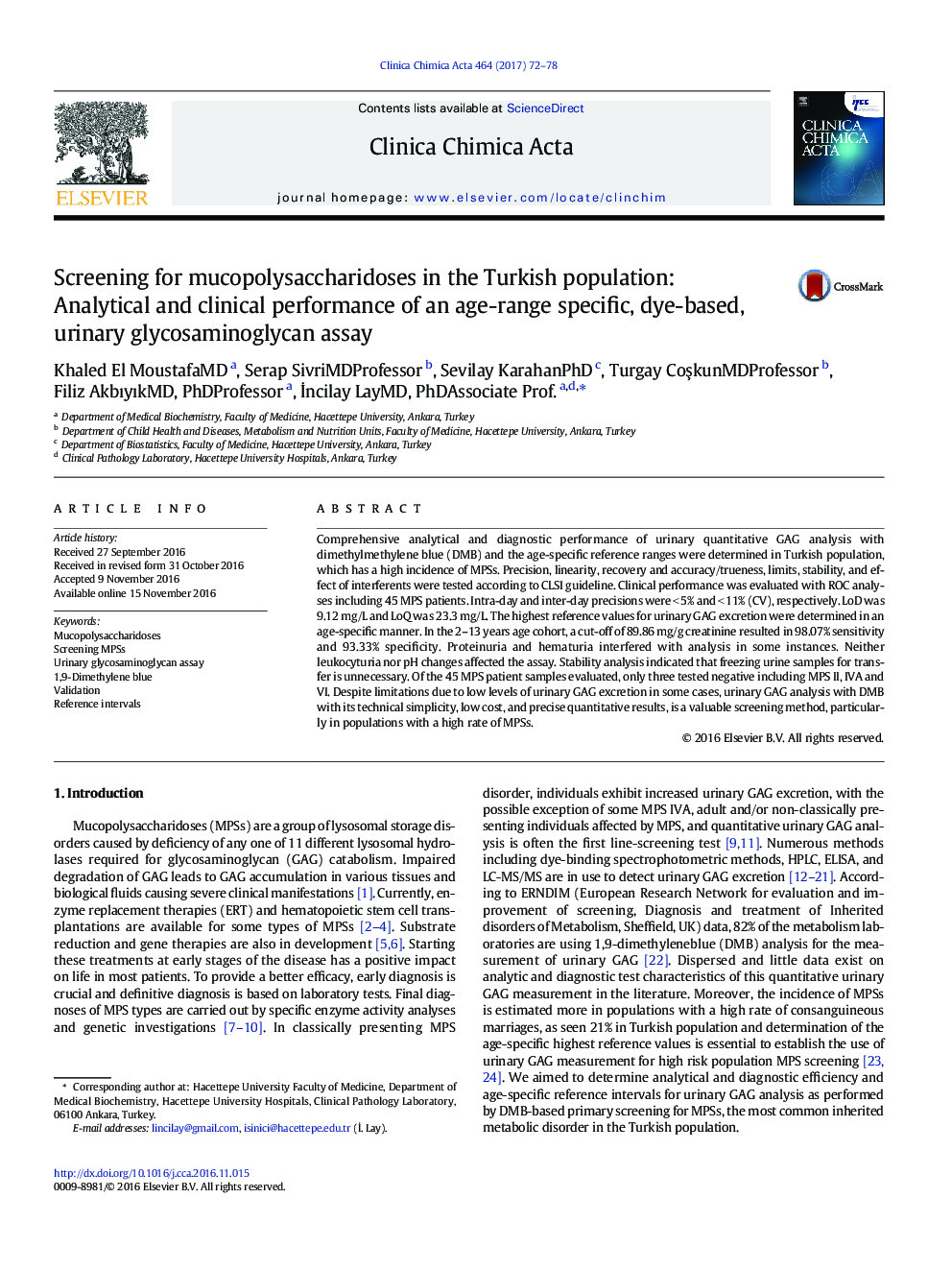| Article ID | Journal | Published Year | Pages | File Type |
|---|---|---|---|---|
| 5509792 | Clinica Chimica Acta | 2017 | 7 Pages |
Abstract
Comprehensive analytical and diagnostic performance of urinary quantitative GAG analysis with dimethylmethylene blue (DMB) and the age-specific reference ranges were determined in Turkish population, which has a high incidence of MPSs. Precision, linearity, recovery and accuracy/trueness, limits, stability, and effect of interferents were tested according to CLSI guideline. Clinical performance was evaluated with ROC analyses including 45 MPS patients. Intra-day and inter-day precisions were <Â 5% and <Â 11% (CV), respectively. LoD was 9.12Â mg/L and LoQ was 23.3Â mg/L. The highest reference values for urinary GAG excretion were determined in an age-specific manner. In the 2-13Â years age cohort, a cut-off of 89.86Â mg/g creatinine resulted in 98.07% sensitivity and 93.33% specificity. Proteinuria and hematuria interfered with analysis in some instances. Neither leukocyturia nor pH changes affected the assay. Stability analysis indicated that freezing urine samples for transfer is unnecessary. Of the 45 MPS patient samples evaluated, only three tested negative including MPS II, IVA and VI. Despite limitations due to low levels of urinary GAG excretion in some cases, urinary GAG analysis with DMB with its technical simplicity, low cost, and precise quantitative results, is a valuable screening method, particularly in populations with a high rate of MPSs.
Related Topics
Life Sciences
Biochemistry, Genetics and Molecular Biology
Biochemistry
Authors
Khaled MD, Serap (Professor), Sevilay PhD, Turgay (Professor), Filiz (Professor), Ä°ncilay (Associate Prof.),
